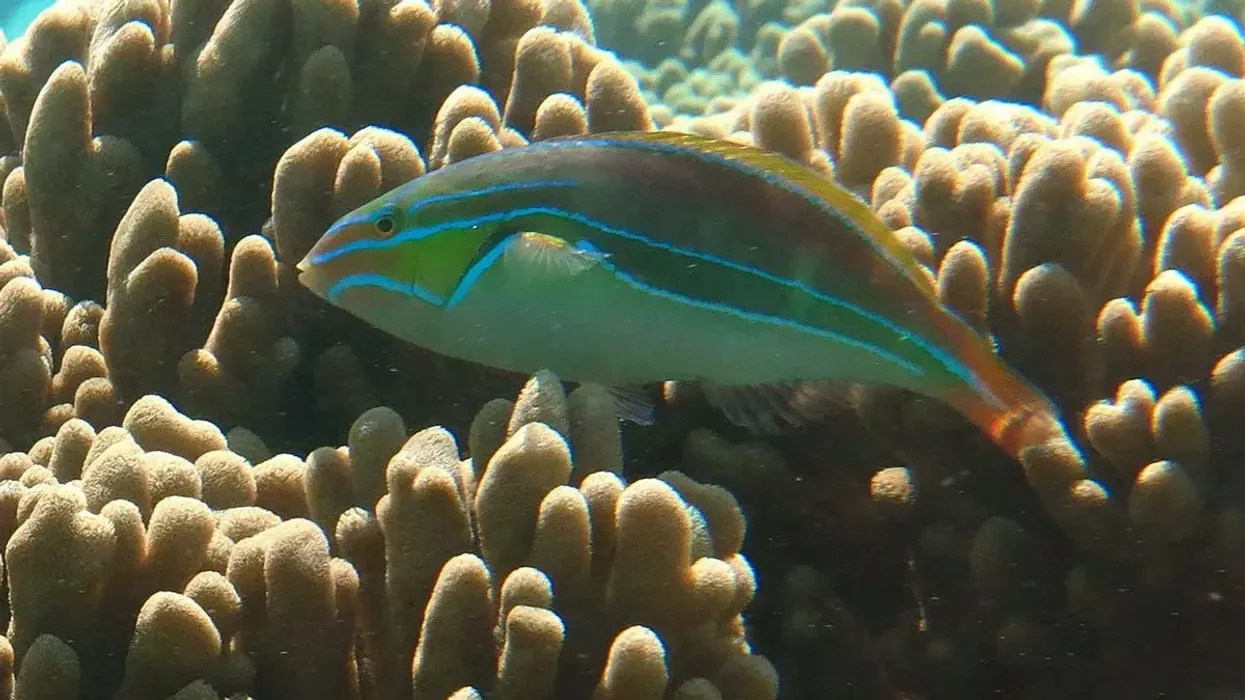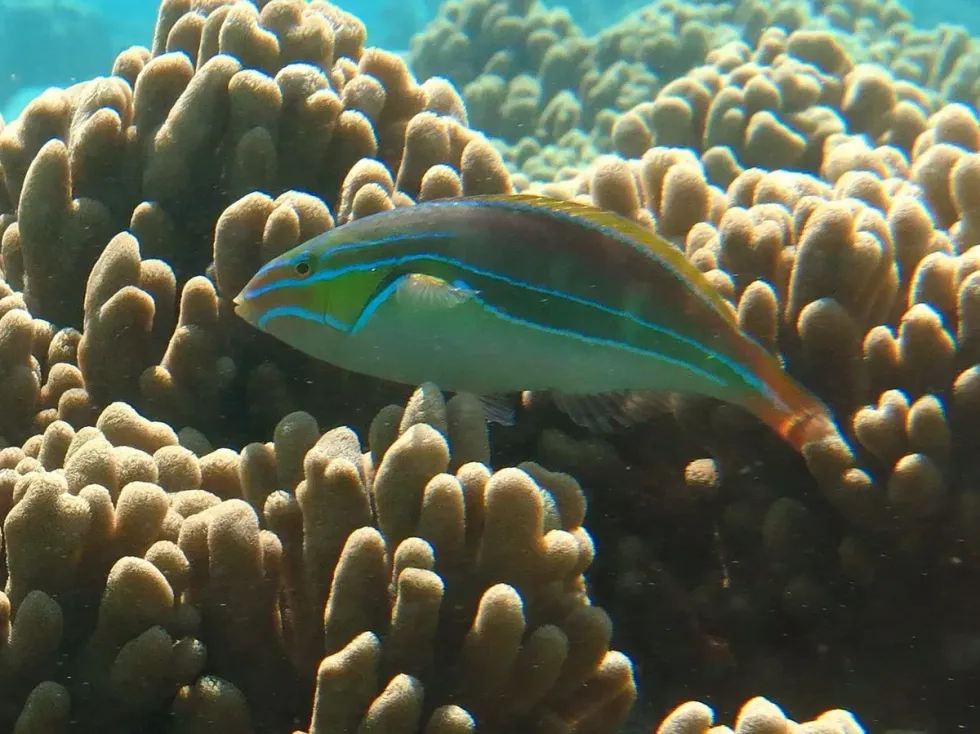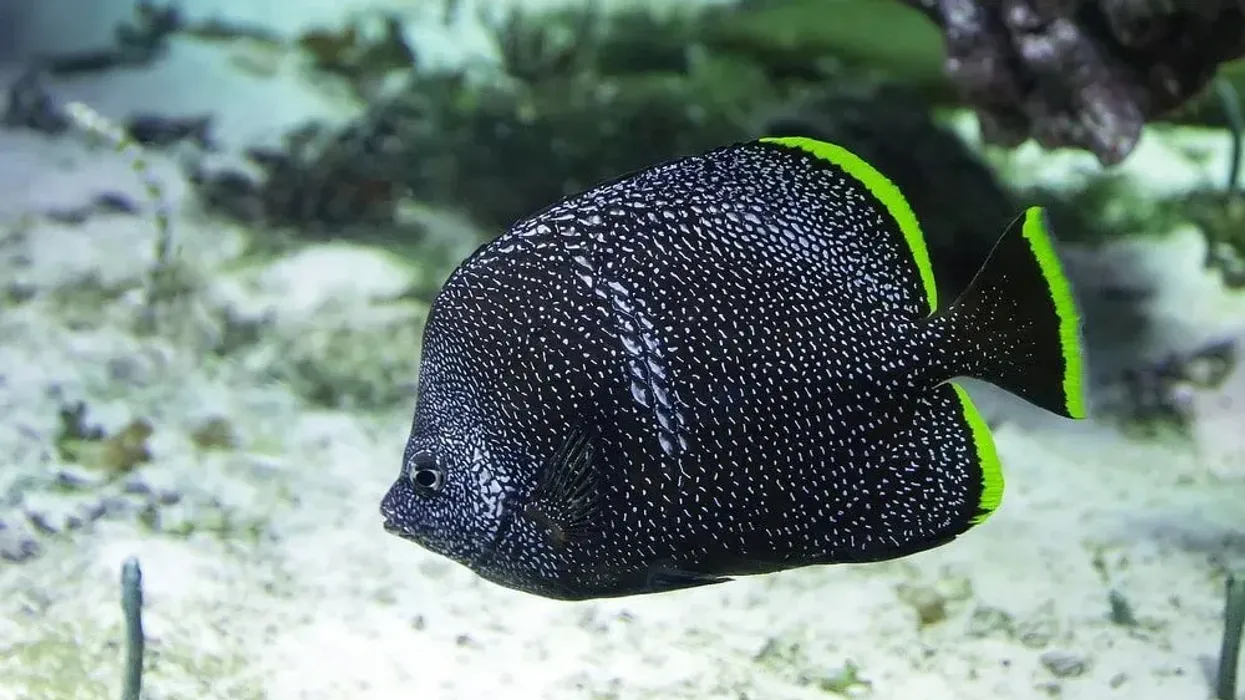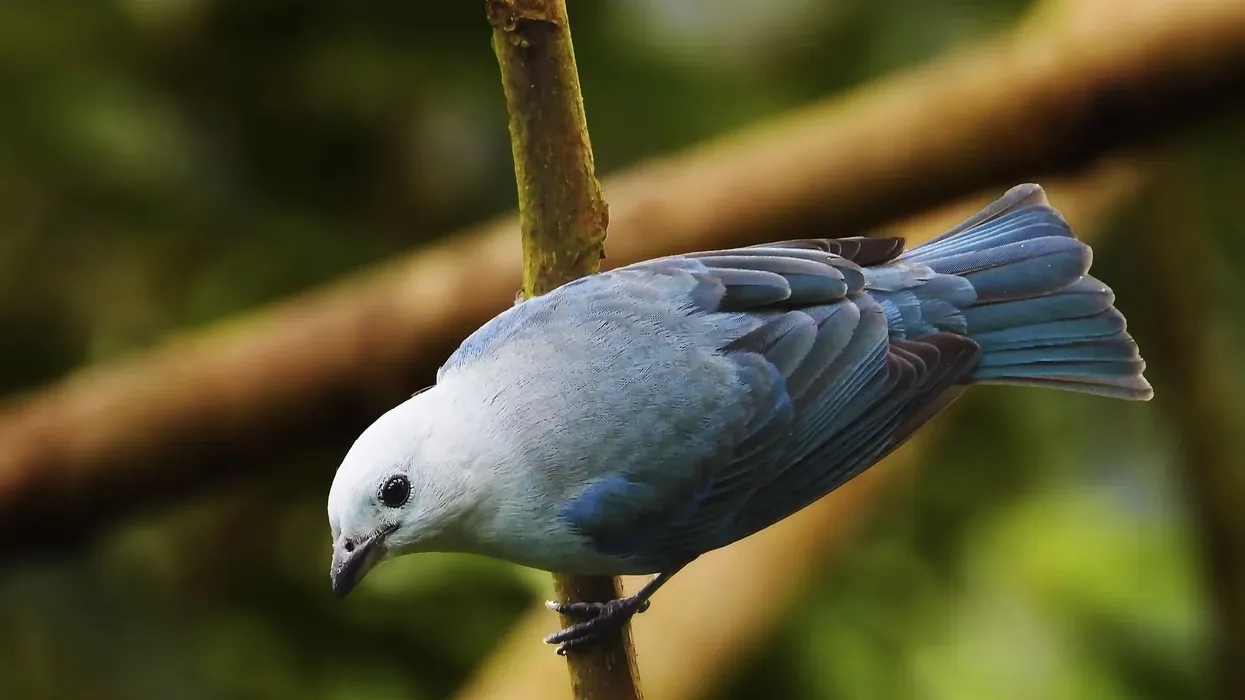Blue rainbowfish are one of the most ubiquitous forms of freshwater fish found. Blue rainbowfish are very peaceful and calm by nature. They are very suitable for community aquariums.
Rainbowfish are stunning to look at and very pleasing to the eyes. They are named so as these fish come in a spectrum of colors.
It is a beautiful fish and showcases an endearing personality. There are more than 50 species of rainbowfish around the world and new species are still being discovered.
These water-creatures are highly active in nature and sustain a lively atmosphere. They can be found in streams, rivers, swamps, and other freshwater and brackish water systems.
They are also not very difficult to maintain as pets and can easily survive in a minimum tank size of up to 20 gal (90.9 L) and as long as their ideal surrounding conditions are maintained. They are active swimmers in nature and require plenty of swimming space.
Read on, to learn more about their family, diet, required temperature, schooling, and distribution. For more relatable content, check out these threadfin rainbowfish facts and forktail rainbowfish facts for kids.
Blue Rainbowfish Interesting Facts
What type of animal is a blue rainbowfish?
The blue rainbowfish (Melanotaenia caerulea) is a type of freshwater fish in the Melanotaeniidae family. They are endemic to Papua New Guinea but they are also kept as pets. You just need to maintain the minimum tank size.
What class of animal does a blue rainbowfish belong to?
The blue rainbowfish belongs to the Actinopterygii class of the Animalia kingdom. They also belong to the Melanotaeniidae family.
How many blue rainbowfish are there in the world?
The exact number of blue rainbowfishes in the world is unknown. However, they have a Vulnerable status in the IUCN Red List and their population trend is decreasing. This is mostly because they are endemic to a very small place, Lake Kutubu in Papua New Guinea, and also because of invasive species and human actions.
Where does a blue rainbowfish live?
The only place that blue rainbowfishes are found in the wild is in Lake Kutubu and its outlet in southern Papua New Guinea.
What is a blue rainbowfish's habitat?
Rainbowfish are found in aquariums and fish tanks, a minimum tank size of 20 gal (90.9 L) is required, around the world. They are also found in the wild. They are native to warm and tropical places such as Papua New Guinea. Their habitat also includes rivers, streams, and freshwater swamps. Some species can also survive in saltwater.
Who does blue rainbowfish live with?
Blue rainbowfish showcase a schooling nature and should be kept in large groups of fish or other invertebrates. They are peaceful in nature and can easily reside with other peaceful fish as their tank mates. Since they are non-aggressive, they can sustain themselves easily with other groups of fish of the same size.
How long does a blue rainbowfish live?
These fish have a lifespan of up to five to six years when kept in proper care.
How do they reproduce?
Rainbowfish reproduce from the method of spawning. Due to their short lifespan, the male and female begin to spawn at an early age of eight months.
In order to obtain proper breeding, there are certain steps that need to be followed. A proper-sized breeding aquarium should be set up. It should contain 75% mature tank water and 25% of dechlorinated freshwater. Gentle circulation and filtration should be given by adding an air-driven sponge filter. The temperature should be set at 77°F (25°C).
A conditioned pair should then be acclimatized across to the breeding aquarium, which should be furnished with plenty of fine-leaved plants or Java moss clumps. Subsequently, the male will swim in front of the female.
It will display the mating stripe on his forehead and will show bright colors. He will ultimately swim all over the tank and drive the females over the plant. The eggs shall be scattered over the plants subsequently.
The spawning activities of these fish take place over several days and weeks and hence these fish are also known as 'continual spawners'. Sometimes this comes off as an uphill task as the adult fish may consume the scattered eggs.
Fishkeepers sometimes move these clutch to separate tanks by using spawning mops or by the method of siphoning. This means that they are egg scatterers and provide no parental care once their eggs are laid.
The number of eggs laid vary. Sometimes the females lay eggs as less as five and sometimes the number increases to 30!
The eggs hatch after 7-21 days depending on the temperature and the type of species. Once these eggs are free-swimming, the tiny fry is offered infusoria, and ultimately provided with larger food particles as their development takes place.
What is their conservation status?
These fish are under the category of Vulnerable on the IUCN Red List of Threatened Species. Lake Kutubu is being looked at to be protected to help preserve these fish species.
Blue Rainbowfish Fun Facts
What do blue rainbowfish look like?
*We've been unable to source an image of blue rainbowfish and have used an image of Boeseman's rainbowfish instead. If you are able to provide us with a royalty-free image of blue rainbowfish, we would be happy to credit you. Please contact us at hello@kidadl.com.

The body size and shape of the fish is long and deepens with age. The head of the older male is triangular in shape.
It does not follow the round contours of the overall body. They have paired dorsal fins and large eyes. Rainbowfish come in many colors but are best known for their gorgeous blues.
The blue rainbow fish are usually cobalt or teal on the top and descend from green to silver or yellow towards the bottom. The fish also has a thin cobalt blue tail at the back of its tail that disappears towards the middle of the body.
How cute are they?
Like yellow tang fish, blue rainbowfish are one of the most gorgeous-looking species due to their shiny deep blue appearance. Its adaptive and friendly nature adds to its list of cute traits. They are highly popular aquarium pets due to their peaceful nature. They are non-aggressive in nature and survive with other groups of fish.
How do they communicate?
Rainbowfish are known for their friendly and peaceful nature. They tend to show behavioral signs so as to communicate and deliver their needs.
For example, if the fish is feeling stressed or scared, it'll show signs like listlessness, not eating, and washed-out coloration. Similarly, if the fish is in proper health and is happy, it will respond in a kind array of its natural behavior such as breeding and sparring where they show their magnificent colors.
How big is a blue rainbowfish?
Blue rainbowfish is one of the larger rainbowfish and are around 3-5 in (7.6-12.7 cm). It takes them over a year to fully grow. They are smaller than cuttlefish and paddlefish.
What are the male and female names of these species?
There are no sex-specific names for the males and females of the species.
What would you call a baby blue rainbowfish?
A baby blue rainbowfish is known as a fry.
What do they eat?
The Melanotaenia caerulea is an omnivore and hence their diet consists of both plants and animal-based food. They are seen feeding on green flakes, micropellets, and live foods that as small frozen foods such as brine shrimp, mosquito larvae, other species of shrimps, and daphnia.
Other than shrimp, they also consume live foods such as small crustaceans, insect larvae, and algae. It has been found that their omnivore diet varies among several species, seasons, and habitats.
These fish do not feed on their smaller tank mates as their mouths are too narrow to swallow them. The diet should be rotated often to obtain the best results.
Are they dangerous?
No these magnificent species of rainbowfish are peaceful and not harmful in nature.
Would they make a good pet?
Blue rainbowfish are extremely magnificent in their appearance. They are also easy to maintain due to their adaptive nature. They are peaceful and amicable and usually get along with most similar-sized fishes. They are non-aggressive in nature.
They are outgoing and will maintain excitement in an aquarium. They can thrive easily when kept in optimal habitats. In order to maintain the health of these beautiful fish, the aquarium should be kept in optimal condition.
The turquoise rainbowfish are also very active swimmers. It is also advisable to keep these rainbow fish in a tank at least 30 in (76.2 cm) long and ideally 20 gal (90.9 l) or more.
It should be a planted aquarium to obtain the essence of its natural habitat. The lid of the tank should be securely covered as the fish can also jump over it. An able filter and some movement of water are efficient for the male fish to enhance their coloration.
The Lake Kutubo rainbowfish will thrive most effectively when displayed in tanks that simulate their natural habitat. Other substituents which provide a natural surrounding like that of Lake Kutubu are a sandy substrate, dense vegetation, and bogwood.
The water should be hard, alkaline, and at a temperature of up to 77°F (25°C). The ph of the water should be at 6.8 with nitrates and ammonia at zero parts per million. Plants inside the aquarium should be able to tolerate such harsh conditions.
Did you know...
While rainbowfish are known for their colors, they are not born this way! Rainbowfish hatch from eggs laid and fertilized in plants. Initially, they are plain, silver or white in color. As they grow older they take on the vibrant colors they're named after. Males grow to become more colorful than females.
How many rainbow fish should be kept together?
Rainbowfish should be kept in a group of six or more due to their schooling nature. An optimal ratio of males to females should be made so that their tank mates maintain peace among them. This also compliments the amicable nature of the fish and they remain in proper health.
Why are rainbow fish called rainbow fish?
Rainbowfish are called so as they showcase a spectrum of bright colors depending on their species. The brighter the color, the proper the health is!
Here at Kidadl, we have carefully created lots of interesting family-friendly animal facts for everyone to discover! Learn more about some other fish from our garfish fun facts and Patagonian toothfish surprising facts pages.
You can even occupy yourself at home by coloring in one of our free printable fish splashing coloring pages.
Main image by Philippe Bourjon.
Second image by H. Zell.









